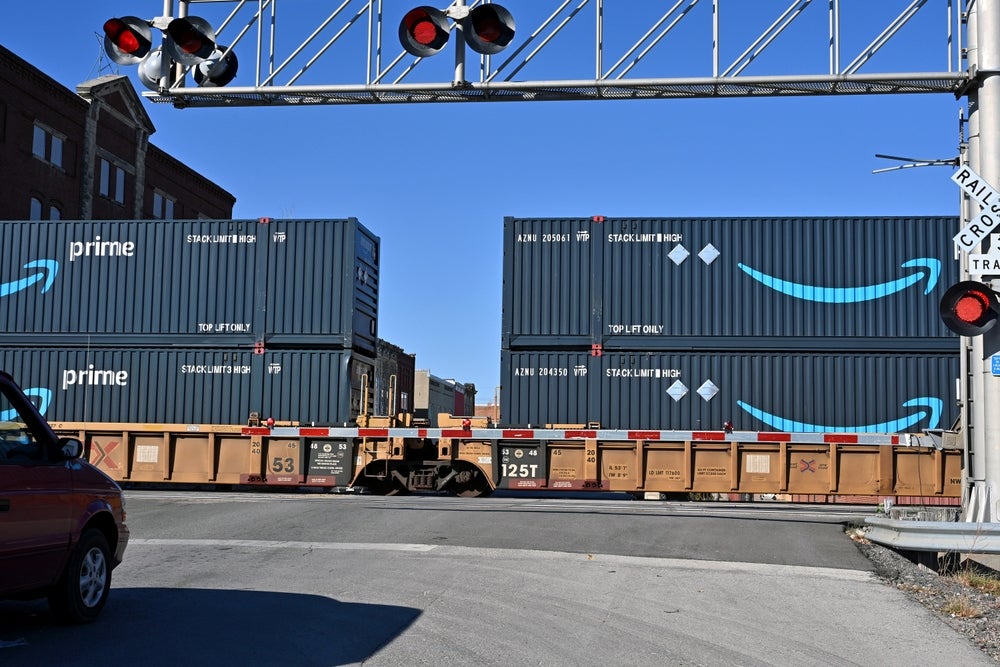
Electrification is the buzzword in British and American rail circles right now.
In October 2009, the UK’s Network Rail announced plans to increase the country’s electric rail capacity by electrifying the Great Western Main Line to Bristol and Swansea, the Manchester to Liverpool route and the central belt in Scotland.
Stateside, President Barack Obama has called for high-speed rail corridors to be built along ten of the US’s busiest routes.
One of the first, the Caltrain between San Jose and San Francisco, is proposing to run on electricity while freight operators Norfolk Southern and BSNF Railways have been studying electrification options along routes for a number of years.
Elsewhere, Canada’s two largest cities are investigating the viability of switching to electric rail and the New Zealand Government has given Kiwi Rail $500m to buy electric trains to improve Auckland’s rail network.
See Also:
Green-eyed developments
How well do you really know your competitors?
Access the most comprehensive Company Profiles on the market, powered by GlobalData. Save hours of research. Gain competitive edge.

Thank you!
Your download email will arrive shortly
Not ready to buy yet? Download a free sample
We are confident about the unique quality of our Company Profiles. However, we want you to make the most beneficial decision for your business, so we offer a free sample that you can download by submitting the below form
By GlobalDataOne of the driving forces behind the sudden fascination with electric trains is a desire to be kinder to the environment. According to the Network Route Utilisation Electrification Strategy, produced by Network Rail in conjunction with key industry stakeholders, rail transport accounts for 2% of the UK’s carbon dioxide (CO2) emissions.
A move towards more electric passenger trains would reduce this figure, it says, as electric trains produce 20–30% less CO2 than diesel ones.
Network Rail’s head of network electrification Kevin Lydford says electric trains use less fuel because they are lighter than diesel engines, so they do not have to power as much mass.
“They transport their energy with them so emissions are controlled at source rather than being given out constantly,” he explains. “Regenerative breaking means some of the electric power on a journey can be recycled during breaking, which can save up to 20% of the energy on a journey with frequent stops.”
Electric trains are generally larger in terms of capacity, faster and quieter than those that run on diesel engines. That means more people can get out of their cars and onto a train, there’s less noise pollution and journey times are cut so goods and people can be moved more quickly.
Unveiling his plans to pump $8bn into high-speed rail as part of his stimulus package in April 2009, Obama praised electric rail as “a system that reduces travel times and increases mobility, a system that reduces congestion and boosts productivity, a system that reduces destructive emissions and creates jobs”.
Counting the costs
As if being faster, bigger and kinder to the environment is not enough, electric trains also have the potential to save operators money. The Network Route Utilisation Electrification Strategy report shows that running an electric service will save Network Rail about 50% on fuel costs and 33% on maintenance, because the vehicles are more reliable and fuel efficient.
“Electric trains are cheaper to power because they don’t require as much fuel as those that run on diesel,” Lydford says.
“The engines are also easier to maintain and because you don’t have to take the train anywhere to refuel, it takes fewer vehicles to run the fleet, which is another cost saving.”
The main barrier preventing UK and US operators joining the French, Spanish, Chinese and Japanese by jumping into bed with electric rail is the huge cost of conversion.
It will cost £1bn to electrify the Great Western line from London to Swansea, while the fee to wean Caltrain off diesel and onto electricity is pegged at a conservative $1.5bn. No wonder some commentators are saying that Obama’s $8bn high-speed rail fund isn’t going to touch the sides.
Morgan Keegan senior transportation analyst and managing director Art Hatfield says cost is the primary issue preventing large-scale uptake of electric rail in the US. “Also, most of the rail traffic in the US is freight and the infrastructure is owned by private companies,” he says. “Because of that and the long distances of track that would be involved, electrified rail is untenable over here.”
Electric future
When the works are complete along the Great Western Main Line in 2017, the Manchester to Liverpool route in 2013 and the central belt in Scotland in 2016, the UK will have 1,700 extra single-track kilometres of electrified train lines. So will the whole system one day be given over to electric?
“It’s unlikely,” Lydford says. “Technology is not advanced enough yet to allow the trains to store enough energy to run an entire fleet on electric, but by investing in further electrification, we are giving the UK the most viable rail option for the future.”
The picture is less optimistic for electrification enthusiasts in the US, according to Hatfield.
“Electrification will not happen in the US because of the mix of freight and passenger rail,” he says.
“It’s hard to mix high-speed rail and freight within the same network. To do so would be very costly and throw up issues with safety. As the rail network is privately owned, I can’t see how you can force the conversion to electric.”







